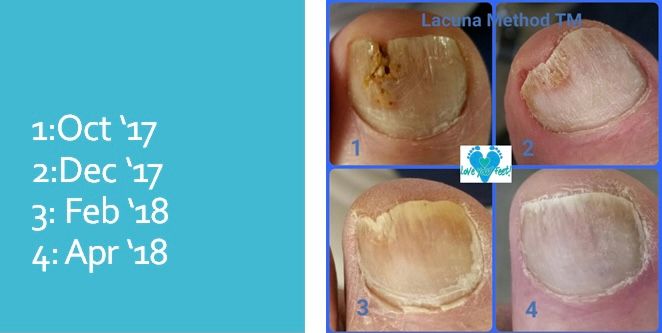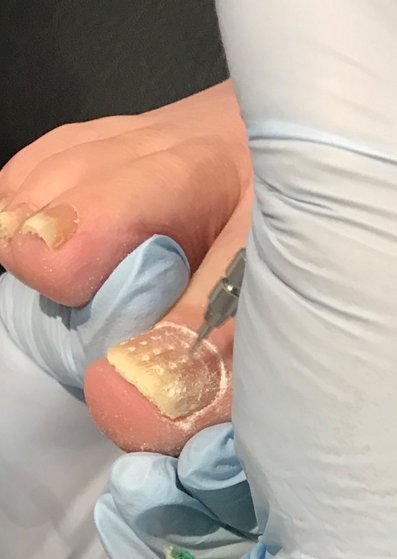How do I know I have fungal nails?
You may have noticed changes in the texture, quality and colour of yours nails. Sometimes it is noticed after nail varnish or gels have been removed. Typical first signs are a yellowing or brown discolouration, nails may become thick, crumbly or brittle. Nails can become distorted, misshapen and may lift from the nail bed losing their healthy shine.
Nail Fungus Signs
• Thickened nails
• Crumbly or brittle nails
• Distorted in shape or lifting
• White, yellow or brown coloured nails
• Nails without a healthy shine
The Lacuna Method is a treatment for fungal nails that involves drilling micro-holes (fenestration) painlessly into the damaged fungal nail to allow for 'Antifungal' (fungal killing) or 'Fungistatic' (fungi inhibiting) agents to directly reach the infected skin under the nail.
So why do we need to treat the nail bed and not just the infected nail?
It is now commonly understood that the nail is damaged and eroded by an infection or infestation of Fungal elements that inhabit our natural biome on our skin; most commonly species of Dermatophyte, Yeast & Mold.
Dermatophytes (Tinea) being the most prevailing and most identified in samples.
Therefore it is the active infection on the subungual skin (skin under the nail - the nail bed) that is damaging and eroding the nail. This is why we want to focus our treatment on the skin not the nail.
This is why other traditional treatments that are applied to the nail are usually ineffective. As they do not address the infection on the nail bed and matrix. They often do not penetrate the nail plate adequately and don't target the infection on the subungual skin, so the infection continues.
Why are we treating the skin under the nail and not the nail itself?
Once damaged the nail does not repair. Nail (like hair) is made of Keratin and, as such, is 'dead' tissue.
Some treatments for fungal nails appear to 'work' because they bleach the discoloured damaged nail.
However, this does not protect the nail from the ongoing fungal attack, so does not cure the underlying problem of the infection on the subungual skin.
The Lacuna Method works on the premise of treating the nail bed, where the live infection is most prevalent rather than the nail itself which is 'dead' and non-repairable.
What is involved?
There are some contraindications for this treatment and its not for everyone, so at your initial assessment we will find out whether it will be suitable for you. If you are suitable and you decide to ahead we will book you in for a course of treatment.
How long will it take?
Unfortunately there is no quick fix for fungal nails and it can take anywhere from 6 to 18 months for a fungal toenail to grow out completely.


